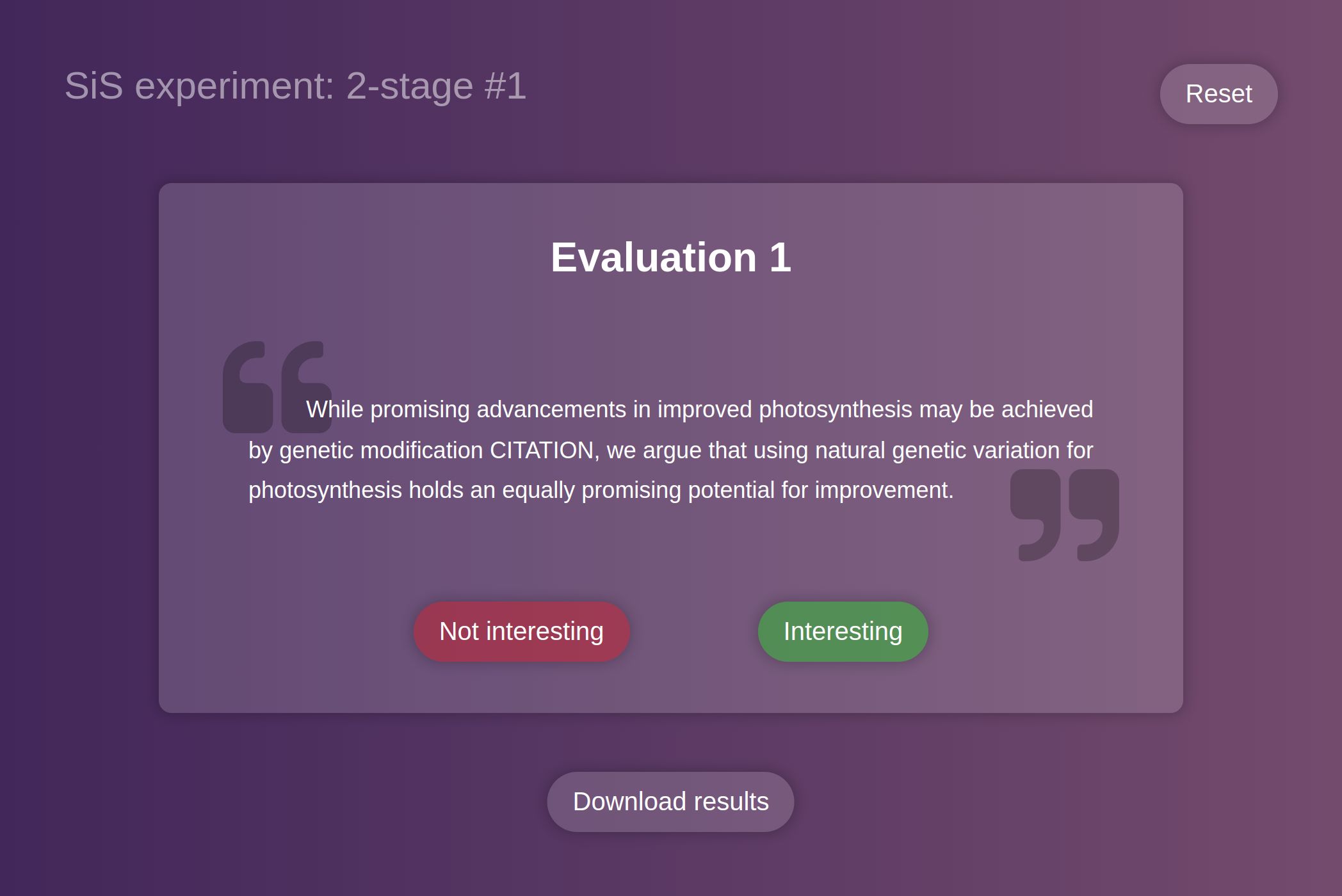Explore data and feasibility of approach¶

We had asked our clients and in-house experts to annotate sentences using a rigorous guideline. The aim is to decide on which sentences they would like to see in a summary for a paper.
The results are in JSON format, each annotator has a separate file. Let's load them.
from pathlib import Path
import json
annotations = []
for p in Path("data").glob("*.json"):
with open(p, encoding="utf-8") as f:
print(p)
annotations.append(json.load(f))
evaluations = {
sentence: [
annotation[sentence] for annotation in annotations if sentence in annotation
]
for sentence in {
sentence for annotation in annotations for sentence in annotation.keys()
}
}
X = [s for s in evaluations.keys()]
y = [int(sum(e) > 0) for e in evaluations.values()]
data/evaluation-experiment-2-stage #1-sa6a0y.json data/evaluation-experiment-2-stage #1-2m6dmb.json
Save the compiled and processed data for later use using LargeFileS3.
from great_ai.large_file import LargeFileS3
import json
LargeFileS3.configure_credentials_from_file("config.ini")
with LargeFileS3("summary-train-dataset-small", "w", encoding="utf-8") as f:
json.dump((X, y), f)
Copying file for summary-train-dataset-small-0 Compressing summary-train-dataset-small-0 Uploading summary-train-dataset-small-0 to S3 as summary-train-dataset-small/0 Uploading summary-train-dataset-small-0.tar.gz 0.04/0.04 MB (100.0%)
Filter out sentences which don't have enough annotations.
y1 = [e[0] for e in evaluations.values() if len(e) == 2]
y2 = [e[1] for e in evaluations.values() if len(e) == 2]
Calculate Cohen's kappa.
It's a bit low but the task itself is pretty subjective so it's not all that surprising.
import sklearn.metrics
sklearn.metrics.cohen_kappa_score(y1, y2)
0.3546448712421808
Can we train anything on this data?
Let's try with a trivial SVM.
X = [s for s in evaluations.keys()]
y = [int(sum(e) > 0) for e in evaluations.values()]
from sklearn.model_selection import train_test_split
from sklearn.svm import LinearSVC
from sklearn.pipeline import Pipeline
from sklearn.feature_extraction.text import TfidfVectorizer
from sklearn.model_selection import cross_val_score
model = Pipeline(
steps=[
("vectorizer", TfidfVectorizer(sublinear_tf=True, min_df=3, max_df=0.3)),
("classifier", LinearSVC()),
]
) # baseline model
cross_val_score(model, X, y, cv=5)
array([0.79, 0.75, 0.77, 0.69, 0.77])
The cross-validation shows promising accuracies. But accuracy isn't everything, therefore, we should investigate the accuracy metrics.
X_train, X_test, y_train, y_test = train_test_split(X, y, test_size=0.2, random_state=0)
model.fit(X_train, y_train)
Pipeline(steps=[('vectorizer',
TfidfVectorizer(max_df=0.3, min_df=3, sublinear_tf=True)),
('classifier', LinearSVC())])In a Jupyter environment, please rerun this cell to show the HTML representation or trust the notebook. On GitHub, the HTML representation is unable to render, please try loading this page with nbviewer.org.
Pipeline(steps=[('vectorizer',
TfidfVectorizer(max_df=0.3, min_df=3, sublinear_tf=True)),
('classifier', LinearSVC())])TfidfVectorizer(max_df=0.3, min_df=3, sublinear_tf=True)
LinearSVC()
y_predicted = model.predict(X_test)
print(
sklearn.metrics.classification_report(
[y > 0 for y in y_test], [y > 0 for y in y_predicted]
)
)
sklearn.metrics.ConfusionMatrixDisplay.from_predictions(
[y > 0 for y in y_test],
[y > 0 for y in y_predicted],
xticks_rotation="vertical",
values_format=".2f",
)
None
precision recall f1-score support
False 0.78 0.78 0.78 51
True 0.78 0.78 0.78 49
accuracy 0.78 100
macro avg 0.78 0.78 0.78 100
weighted avg 0.78 0.78 0.78 100
We get an F1-score of 0.78 without any hyperparameter-optimisation; this task may be feasible to solve with AI.
Next: Part 2